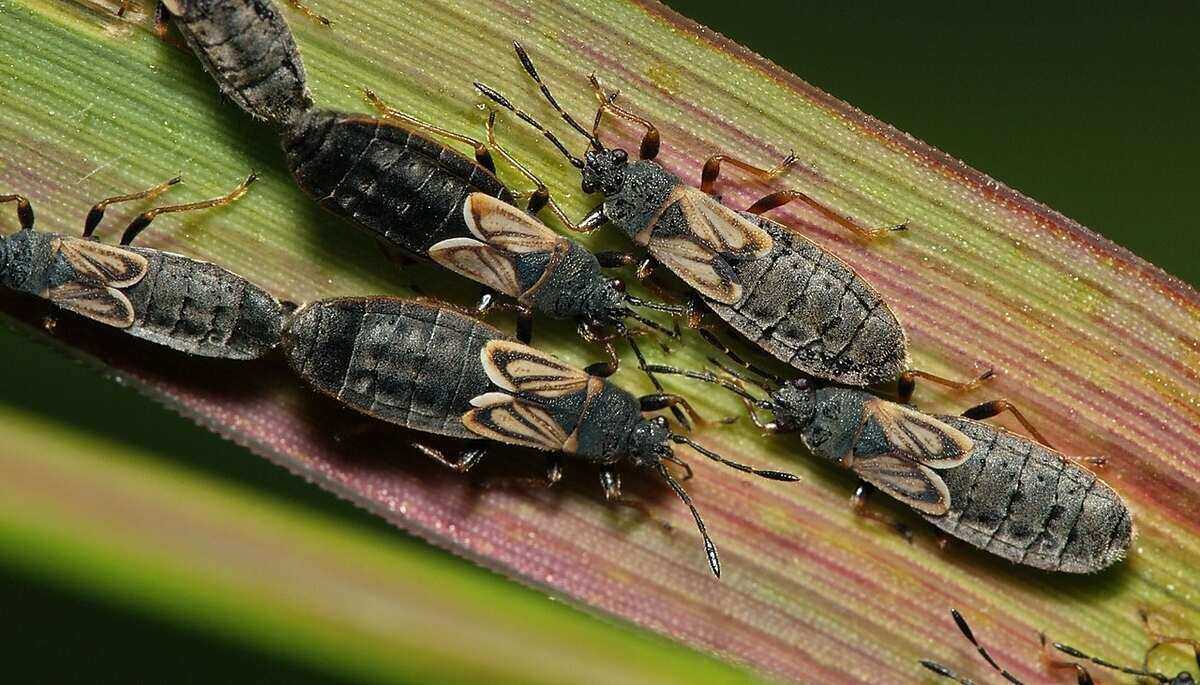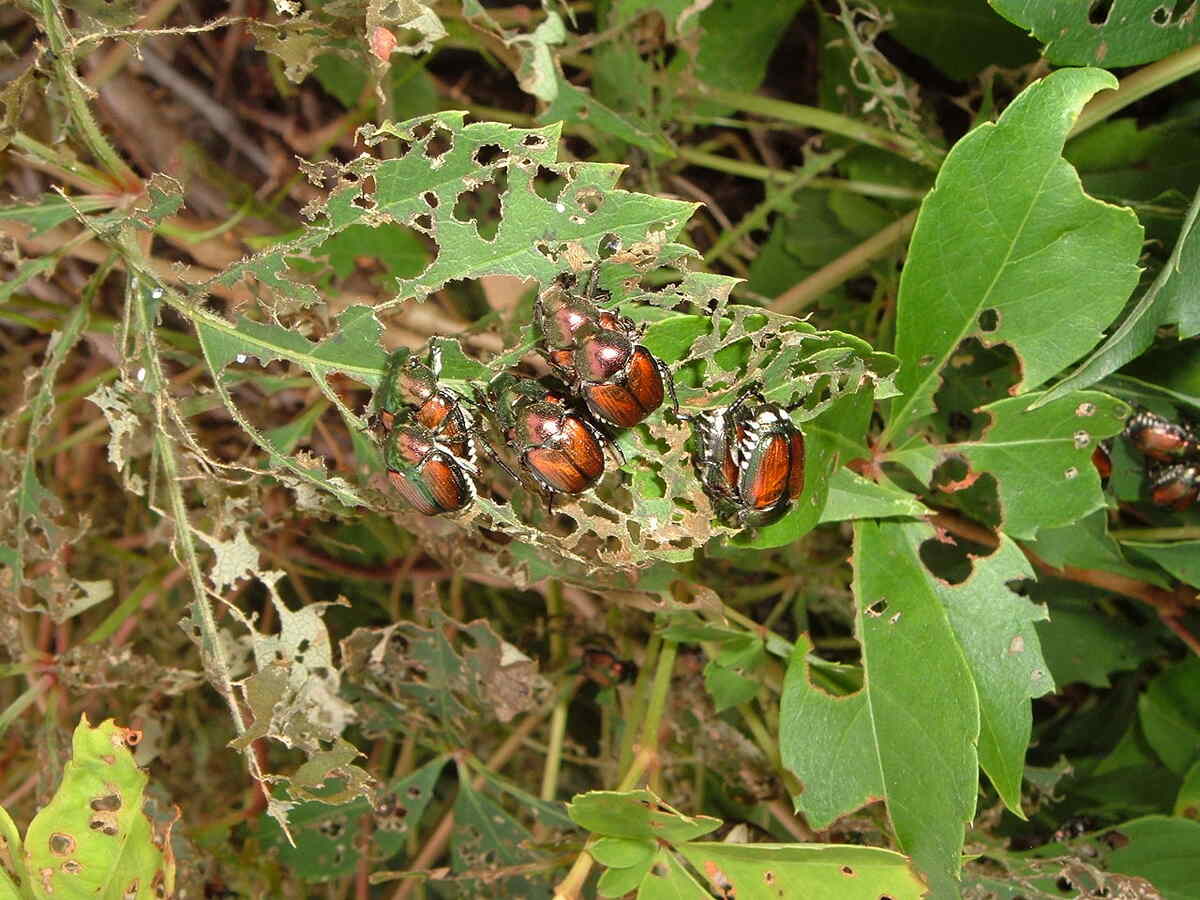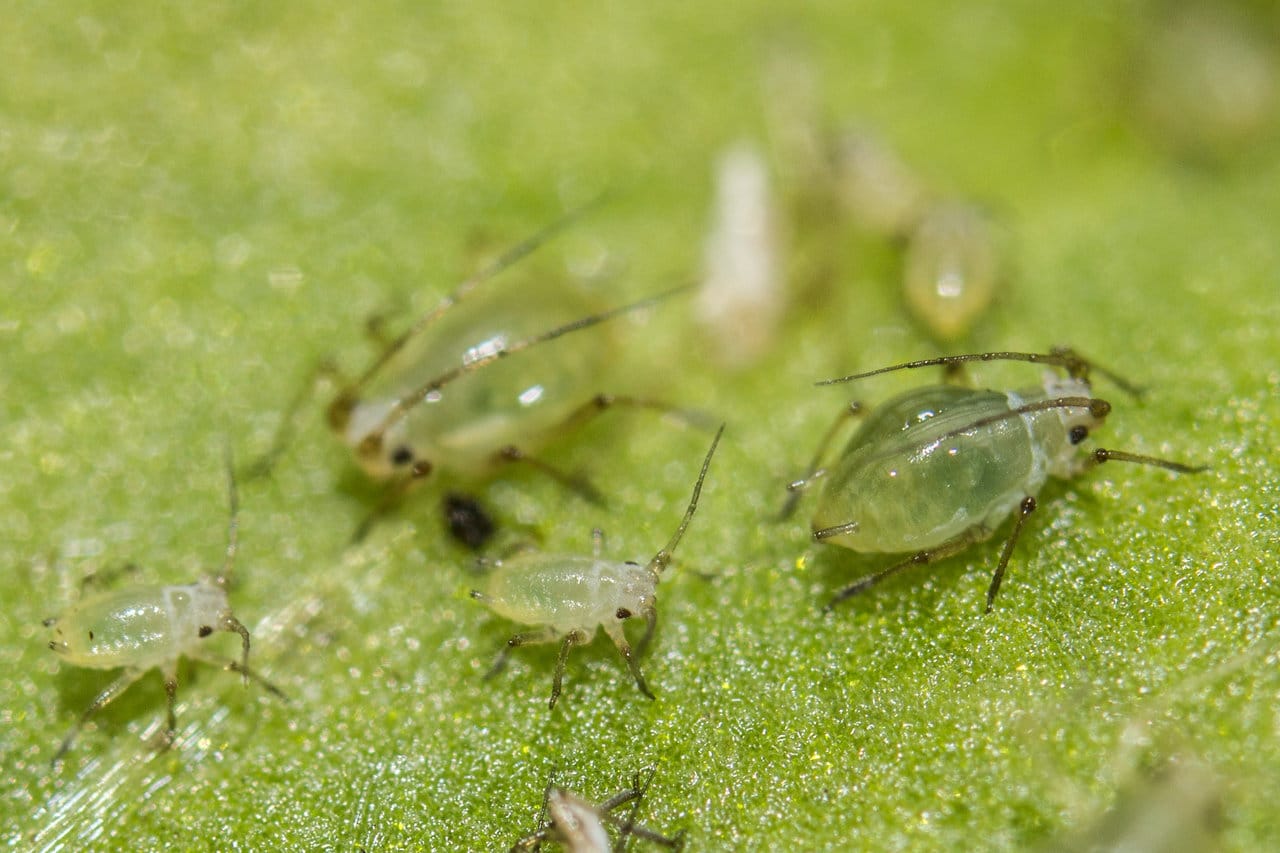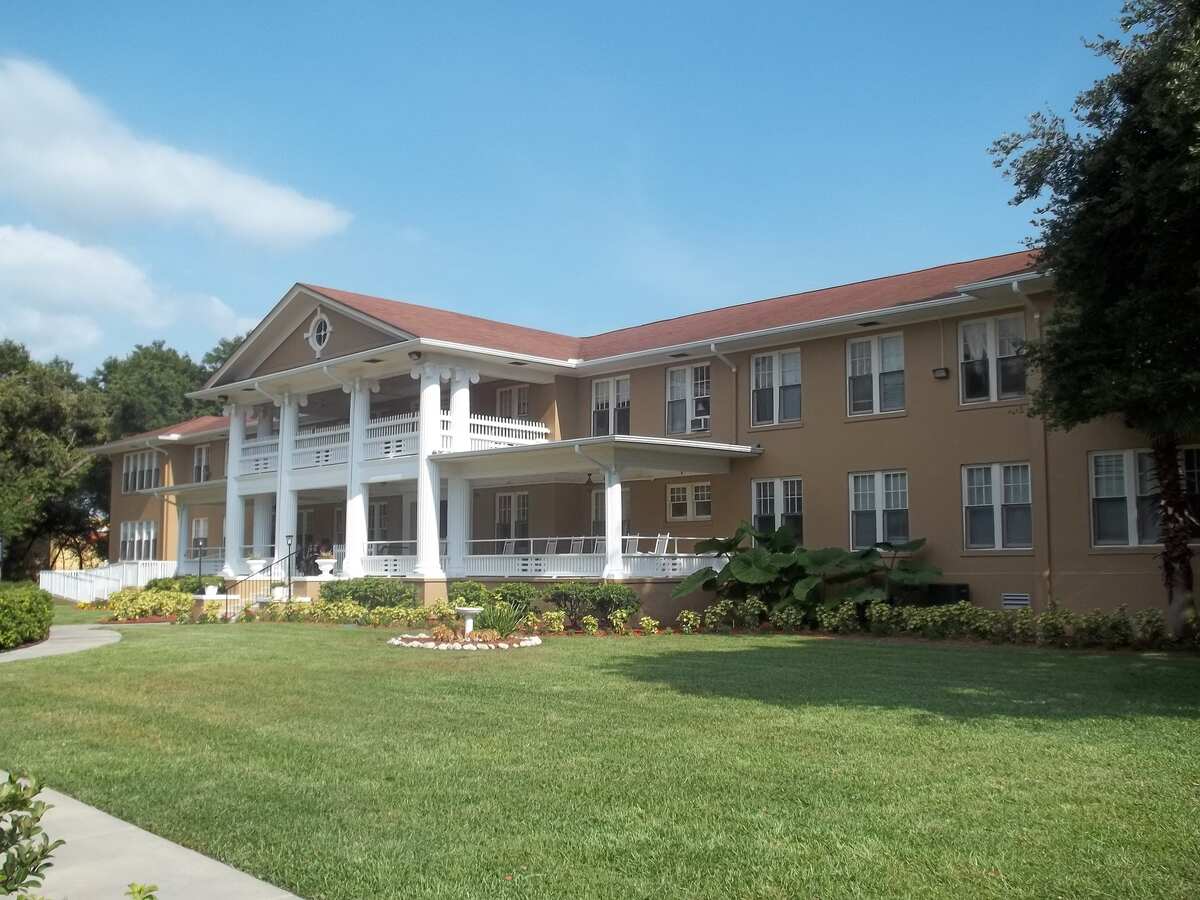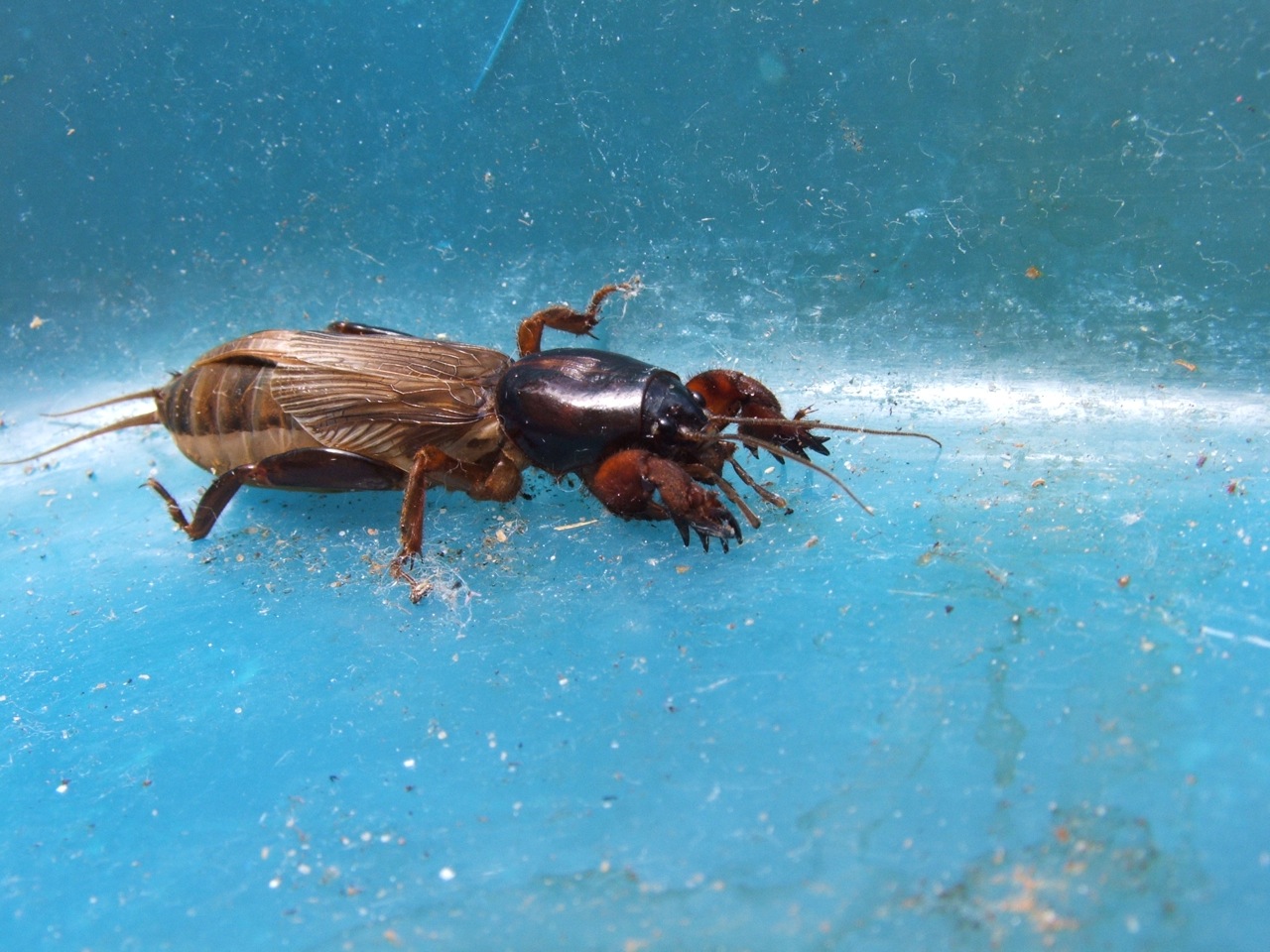
Here’s a “Tampa Pests 101”: The four most common lawn pests, what they are and what they do.

Photo: Rego Korosi
Chinch Bugs
Adult chinch bugs are one-fifth of an inch long and have black bodies with white wings. You won’t know they’ve infested your lawn until the grass starts turning yellow, then reddish brown, then dead.
Chinch bugs love St. Augustinegrass, especially the thick thatch that’s in full sun in hot, dry weather. The damage begins in early July to late August. The bugs feed on the grass stems, removing the fluids and injecting the toxins that sentence the grass to a slow death.
If you look down into the grass on a healthy part of the lawn that abuts the damaged part, you might see chinch bugs rollicking around the base of the grass stems. You’ll need to look closely, since they blend in with the thatch.
Or you can flush them out. Take a gallon can open at both ends and push it several inches into the soil. Fill it three-quarters with water and stir up the grass and soil at the bottom. If your lawn is infested with chinch bugs, you’ll see the first few float to the surface in about 10 minutes.
Once you know you have chinch bugs, you’ll want to read How to Get Rid of Chinch Bugs.

Photo: Dmitry Baranovskiy
Mole Crickets
Mole crickets are an inch and a half long with velvety gray-brown bodies, wings and forelegs shaped like little spades for tunneling beneath the ground. They tunnel through the soil fairly close to the surface, uprooting grass and severing roots and eating both. These insects are most destructive in late August through early October when you’ll see ugly brown patches on your lawn.
To make matters worse, predators, such as raccoons and armadillos, love to snack on mole crickets and will dig up your lawn to get at them.
Check to see if mole crickets are your problem by mixing one and a half ounces of dish-washing liquid into 2 gallons of water. Sprinkle the mixture around a 4-square-foot section of your lawn. If mole crickets are wreaking havoc on your lawn, you’ll see a few within minutes.
And what to do if mole crickets have made a home in your yard? Read How to Get Rid of Mole Crickets.

Photo: Andy Reago & Chrissy McClarren
Sod Webworms
Sod webworms are three-quarters of an inch long with green bodies with numerous black spots. They are the larvae of a small brown moth, which makes them caterpillars, not worms. They feed at night and, during the day, are tucked inside their cozy burrows in the damaged areas of the lawn.
Sod webworms attack all types of grasses, as well as plants and shrubs, but their favorite “dining establishments” are Bermuda and St. Augustine lawns. You’ll see the first signs of damage in the spring: chewed tops of blades and patches of lawn with shorter grass.
And here’s How to Get Rid of Sod Webworms.
Usually, lawns sustain the most damage in August. With the hot temperatures, grass being a bit lethargic in growing, and the sod webworms having a feast every day, you’ll see irregular patches of yellowish-brownish grass; some patches may be completely bare.
Dig through the thatch. If you find silk-lined tunnels, sod web worms are your culprits. Or you can soak a section of the lawn with that same dish-washing solution.

Photo: Camila Plata
Armyworms
Armyworms aren’t worms; they are caterpillars that become small gray and brown moths. They are 1 to 1½ inches long, greenish-brown to black with white, orange and brown stripes on their abdomens. Armyworms are so-named because they travel in small armies, eating everything in their path. Their favorite paths are through Bermudagrass.
If, in the fall, your grass turns brown suddenly or disappears altogether, armyworms could be to blame. These pests feed on your grass and lay their eggs on its blades and can be deadly to new lawns. They eat all the green leaf above the ground, leaving behind large areas of brown turf and thatch. After two to three weeks of this assault, the caterpillars bury themselves in the top inch of soil and two weeks later emerge as moths. And the cycle continues.
A clue that you might have armyworms is a great increase in birds in your yard. Birds love armyworms to snack on. Unfortunately, they don’t eat enough of them to get the infestation under control.
And how can you send those troops of armyworms packing or defeat the armyworms army? Check out our article on How to Get Rid of Armyworms in Your Yard.
When to Hire a Lawn Pest Control Pro
Contact your local lawn care provider for information on evicting the squatting pests.
Need help tending to your lawn? Visit our Tampa lawn care page for more info! In addition to Tampa, we also provide lawn care service in Spring Hill, St. Petersburg, Clearwater, and Ruskin.
